#It's not that Tolkien is ignorant of the dangers women face in time of war (c.f. The Children of Húrin!)
Explore tagged Tumblr posts
Text
GRRM may write more women than Tolkien, but as a woman I would feel much safer in Tolkien's world, and around the author himself
#It's not that Tolkien is ignorant of the dangers women face in time of war (c.f. The Children of Húrin!)#but he's not voyeuristic about it and you get the impression that it's a sad aberration and not the normal way of the world#tolkien#silmarillion#lotr#my post#anti grrm#(kinda)#miscellanea
2K notes
·
View notes
Text
Azor Ahai, The Prince that was Promised and the Red Sword of Heroes (part 4)
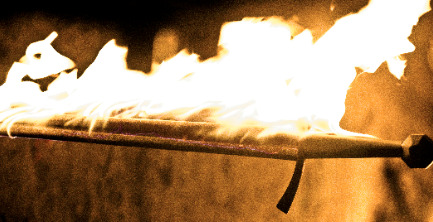
In my last post, I examined the legend of Lightbringer - the burning sword that Azor Ahai wielded against the dark. I also touched upon the how the legend relates to Daenerys and her dragons. This post will continue this subject but I’ll also raise the issue of the reliability of prophecies as well as cast some doubt upon the issue on whether Azor Ahai reborn really is the promised hero. (Part 1, Part 2, Part 3)
THREE SWORDS, THREE DRAGONS
If the hatching of the three dragons represents the three swords forged by Azor Ahai, then what would represent their tempering? This is where we enter into the realm of speculation based on the show rather than the books. I would argue that the dragons will be tempered in battle. It is a common saying that soldiers tempered in battle as an expression testing their mettle. Dany’s dragons will be tested in battle and two of them will fall – and it will Viserion and Rhaegal, their growth and strength inhibited by their incarceration in the pit of the pyramid in Meereen. Just as the the growth of the Targaryen was slowed after they were confined to the Dragonpit in King’s Landing.
In the show, Viserion was felled by the Night King’s icy spear and it sunk into the icy waters of a lake. This could definitely be considered as a tempering by water, like the first sword that AA forged. However, we don’t know if this is a plot that is exclusive to the show or whether Dany will lose a dragon to the ice zombies in the books as well. There is another possibility for a tempering by water in the books. Victarion Greyjoy is on his way to Meereen with horn Dragonbinder, a Valyrian artifact that supposedly has the ability to control dragons. The Greyjoys are associated with water (the sea) and Victarion suborning one of Dany’s dragons can certainly be considered a failed tempering by water.
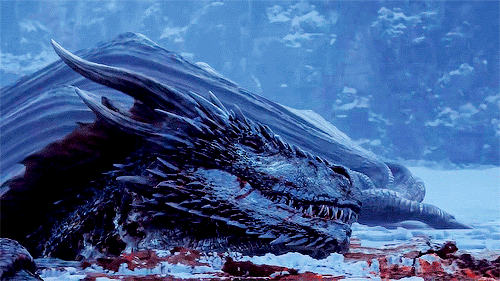
The second sword that AA forged was tempered in the blood of a lion and still it failed. If a second dragon is killed in battle (as an analogy to the tempering of the second sword), then it is very likely that it will involve a Lannister since the sigil of House Lannister is a lion. The show has already teased this when Jaime Lannister charged Drogon in s07ep4.

I have written elsewhere that the imagery of this scene has several points of similarity with artistic depictions of St. George the Dragonslayer throughout the history of Western art since the Middle Ages. If Jaime is to kill a dragon, it will probably be Rhaegal since the dragon in the paintings of St. George the Dragon Slayer almost always is green (like Rhaegal).
That leaves Drogon, the largest and strongest of the dragons. Is Drogon really the Red Sword of Heroes? Is this monster really the weapon that will deliver the world from an icy apocalypse?
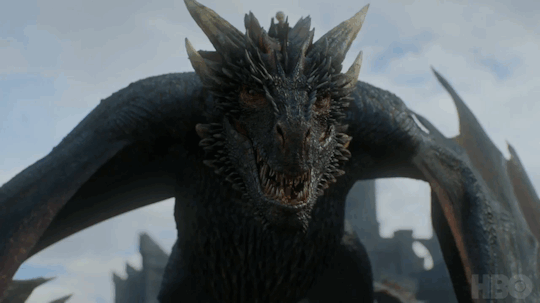
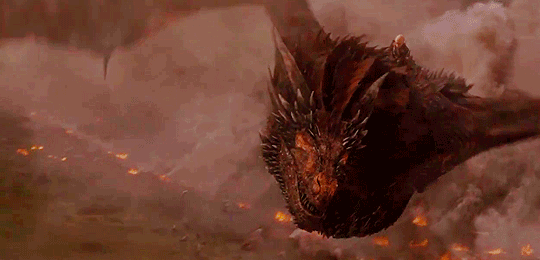
Make no mistake. The dragons are monsters! Even Daenerys realizes this in one of her rare moments of self-reflection:
Mother of dragons, Daenerys thought. Mother of monsters. What have I unleashed upon the world? A queen I am, but my throne is made of burned bones, and it rests on quicksand. Without dragons, how could she hope to hold Meereen, much less win back Westeros? I am the blood of the dragon, she thought. If they are monsters, so am I. (ADwD, Daenerys II)
WHAT HAVE I UNLEASED UPON THE WORLD? This is such an interesting sentence, especially in the context of Daenerys as Azor Ahai come again. The dragons are dangerous, they are destructive on a massive scale and they may do more harm than good.
IS PROPHECY DESTINY?
In my previous post, I made an argument for Daenerys Targaryen as the fulfillment of the prophecy of Azor Ahai reborn. I feel fairly confident in identifying Dany as AA come again. Azor Ahai reborn is the Champion of R’hllor and Daenerys is connected to fire in an intimate and elemental way. Does this mean that Dany is the one who will save Westeros? In a traditional piece of fantasy fiction, she most certainly would be. When it comes to GRRM, I am less certain because he engages critically with the tropes that dominate fantasy as a genre:
The battle between Good and Evil is a theme of much of fantasy. But I think the battle between Good and Evil is fought largely within the individual human heart, by the decisions that we make. It’s not like evil dresses up in black clothing and you know, they’re really ugly. These are some of the things that Tolkien did; he made them work fabulously, but in the hands of his imitators, they become total clichés.
It is certainly a genuine, legitimate topic as the core of fantasy, but I think the battle between Good and Evil is waged within the individual human hearts. We all have good in us and we all have evil in us, and we may do a wonderful good act on Tuesday and a horrible, selfish, bad act on Wednesday, and to me, that’s the great human drama of fiction. I believe in gray characters, as I’ve said before. We all have good and evil in us and there are very few pure paragons and there are very few orcs. A villain is a hero of the other side, as someone said once, and I think there’s a great deal of truth to that, and that’s the interesting thing. In the case of war, that kind of situation, so I think some of that is definitely what I’m aiming at. – GRRM (x)
On the surface, Daenerys Targaryen is a character that conforms to many of the genre’s expectations when it comes to a hero and saviour. She’s royalty fallen on hard times. She has undergone a lot of hardship but she is ultimately rewarded with magical creatures and she quite likely is the subject of a prophecy about the salvation of the world.
However, GRRM quietly subverts the trope of the prophesied saviour. Daenerys wants to be good, she wants to be a saviour. She has empathy for the suffering of the downtrodden people she comes across in Essos. She wants to save them and she leads a war of conquest against the Masters of Slaver’s Bay in the name of freedom. However, Daenerys is a saviour who fails again and again, not because she faces overwhelming odds but because she ignorant and lacks patience. Her solution for the Lhazareen women she “saves” from rape by the Dothraki is to make them marry their rapists. The slaves she liberates in Meereen are forced to sell themselves back into slavery because she has no alternative to the slave economy she destroyed.
In the world that GRRM has created, Daenerys Targaryen being the reincarnation of Azor Ahai doesn’t necessarily mean that she will save the world. She’s not going to be a hero and saviour simply because a prophecy says so. If she’s going to save the world, then it will be because she chooses to do so! “The battle between Good and Evil is fought largely within the individual human heart.”
In the show Dany has come to a cross roads. She has to choose between her desire to be a saviour and her desire for the Iron Throne. She can be a saviour or a conqueror. She cannot be both – and she hasn’t made this choice yet. Her dragons are weapons and they can be used for either good or evil – against the ice zombies or against living breathing people.

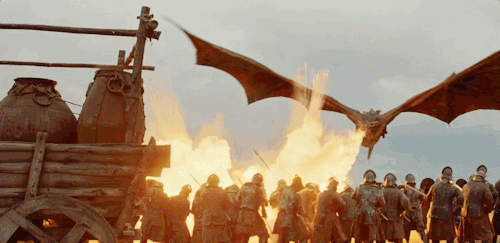
She can choose to be either a saviour or the Queen of Ashes.
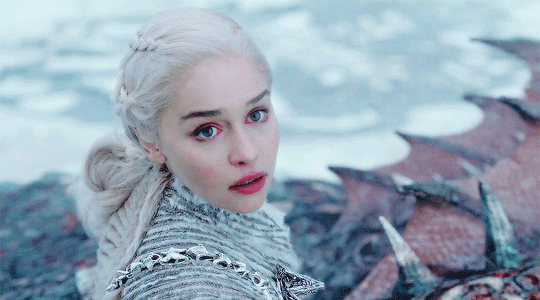
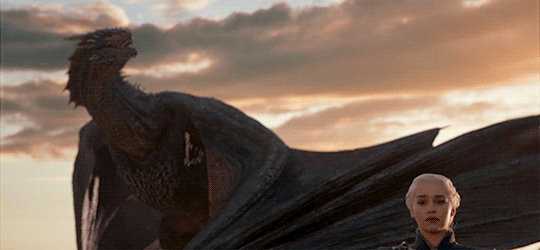
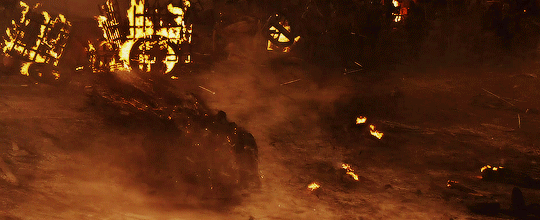
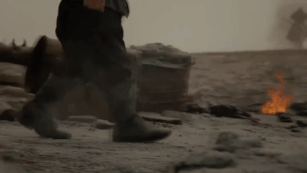
My point is this: prophecy is not necessarily destiny! The hero has to choose to do the right thing – and that choice has to be difficult. It cannot be a foregone conclusion that the “hero” will make the right choice because it can be very difficult to abandon selfish desires.
There’s also another reason as to why we should be wary of the role Daenerys may play as Azor Ahai reborn. Prophecies are tricky. In fact, several warnings are issued regarding prophecies in the text itself:
“Prophecy is like a half-trained mule. It looks as though it might be useful, but the moment you trust in it, it kicks you in the head.” - Tyrion Lannister to Jorah Mormont (ADwD, Tyrion IX)
Gorghan of Old Ghis once wrote that a prophecy is like a treacherous woman. She takes your member in her mouth, and you moan with the pleasure of it and think how sweet, how fine, how good this is… and then her teeth snap shut and your moans turn to screams. That is the nature of prophecy, said Gorghan. Prophecy will bite your prick off every time.“ - Maester Marwyn to Samwell Tarly (AFoC, Samwell V)
These utterances are not just warnings to the characters within the story. They are also warnings to the reader. I find this notion of prophecy as a warning very interesting. The unreliability of prophecy goes beyond identifying who is the promised hero. It questions the very nature of prophecy itself – and I think that we should be very suspicious and wary of the prophecies that the priests of R’hllor espouses. This is a subject that I’ll examine in the next installment of this series.
#azor ahai#the prince that was promised#lightbringer#asoaif#meta#a song of ice and fire#game of thrones#prophecy
69 notes
·
View notes
Text
#It's not that Tolkien is ignorant of the dangers women face in time of war (c.f. The Children of Húrin!)#but he's not voyeuristic about it and you get the impression that it's a sad aberration and not the normal way of the world#tolkien#silmarillion#lotr#my post#general#anti grrm#(kinda)
GRRM may write more women than Tolkien, but as a woman I would feel much safer in Tolkien's world, and around the author himself
#this exactly#in Tolkien´s writings bad things can & will happen to women#but its always presented as a sad & abnormal thing#there is no shock-value in it#things i like#books#lotr#middle earth#jrr tolkien
2K notes
·
View notes